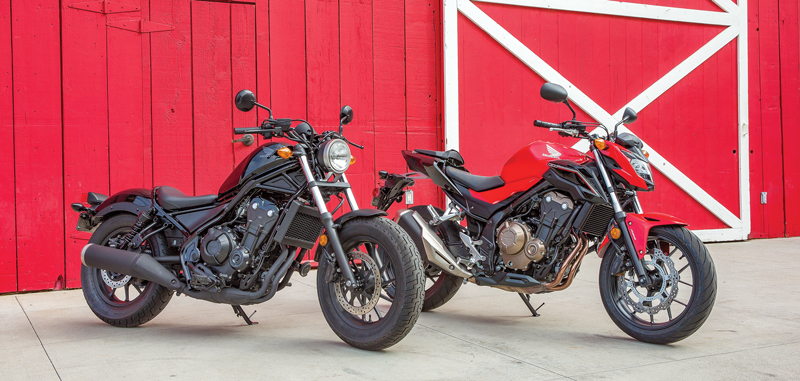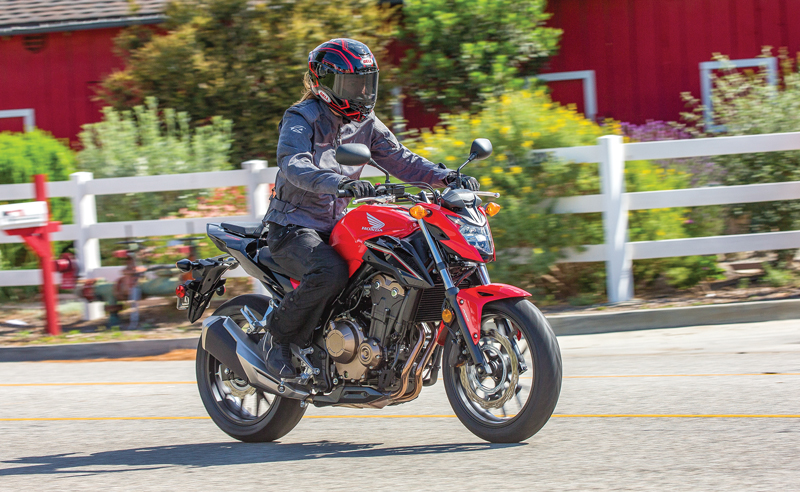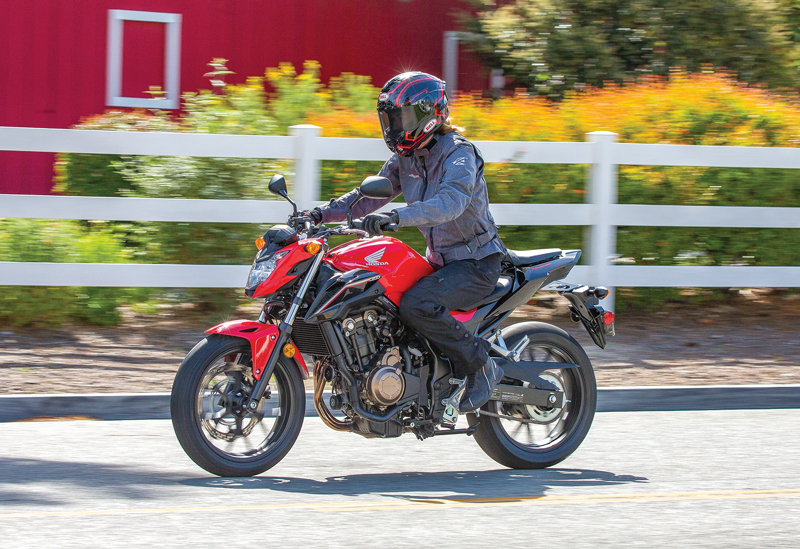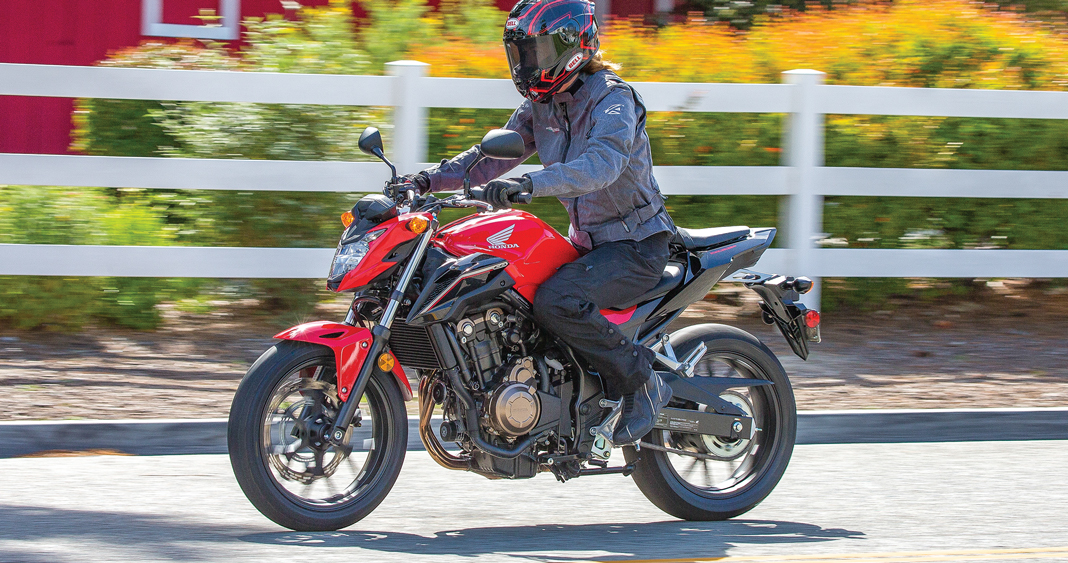Sitting side-by-side, the Rebel 500 and CB500F don’t appear to be kin, the only potential giveaway being the “surname” (i.e. Honda wing) on each one’s tank. It may surprise you to learn that they actually share an engine and are priced within $100 of each other (the CB500F starts at $6,099). But the family resemblance ends there; while both can lead you to the common conclusion of “great first bike,” they take different paths getting there. Where the Rebel is punchy down low, with the off-the-line grunt required to do battle in city traffic and a modern, blacked-out bobber look heavily influenced by cruisers of the late ’70s and early ’80s, the sporty CB500F is ready to take on the nearest twisty road, with its
version of the 471cc parallel twin tuned for mid-to-high-end excitement and suspension better suited to strafing corners than the Rebel’s squishy underpinnings.
Read our review of the Honda Rebel 500 here.

Around town, the CB500F is smooth, predictable and easy to handle. Its 30.7-inch seat height is 3.5 inches higher than the Rebel’s but still reasonable, and narrow-ish bars don’t require a long reach for lock-to-lock parking lot maneuvers. Hunt down some twisty roads, and the CB500F shows its true colors, encouraging the rider to wind it up above 5,500 rpm and have some fun. In fact, while the Rebel makes slightly more torque below 5,000 rpm for easier riding at lower engine speeds, thanks to its rev-happy nature the CB made almost 6 more peak horsepower than the Rebel on the Jett Tuning dyno, an increase of 15 percent.

Price-point components aren’t race-spec, but they don’t need to be. The suspension is adjustable for preload both front and rear, and while it’s soft by sportbike standards, it’s well suited to the CB’s weight and power. The single 320mm disc up front and 240mm disc in the back are enough to slow the 420-pound (wet) bike down, and, like the Rebel, ABS is a $300 option. With the 4.4-gallon gas tank full, it should be possible to string together a nice long, twisty ride (our test bike averaged 62.4 mpg on regular fuel, good for 274 miles per tank).

Both the Rebel and the CB are image-conscious designs with a riding experience to match. Whichever one speaks to you (minimalist and hip, or sporty and athletic), you’ll likely end up with a smile on your face and enough cash leftover in your pocket to snag that new helmet you’ve been eyeing.
Jenny’s Gear:
Helmet: Bell Star
Jacket: AGV Sport Arc
Pants: Joe Rocket Alter Ego
Boots: Fly Mile Post Air













